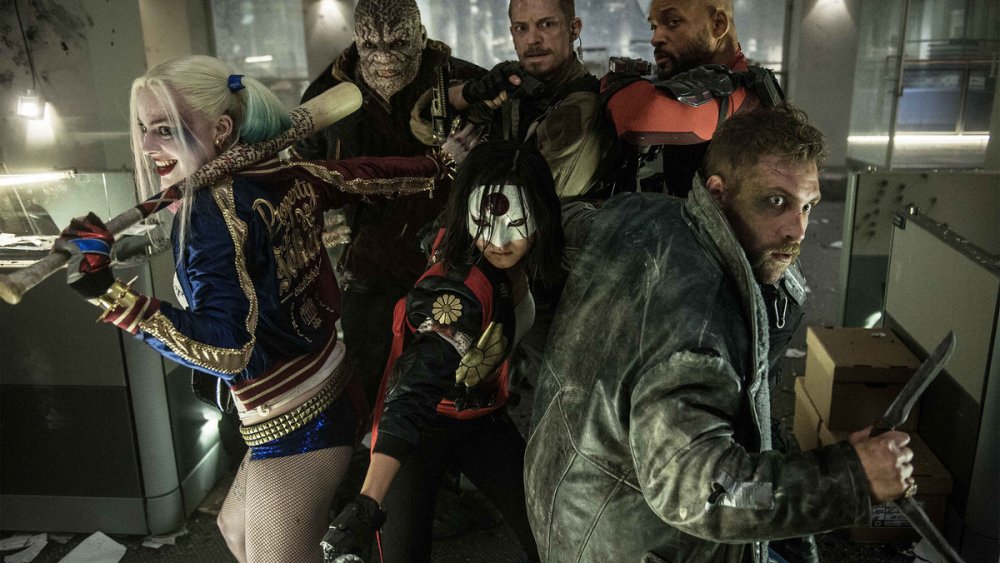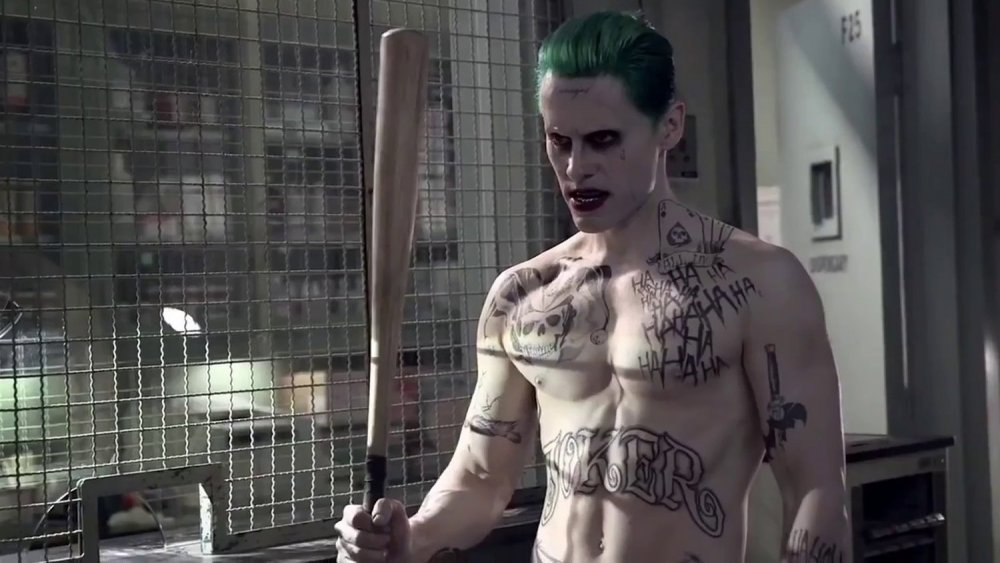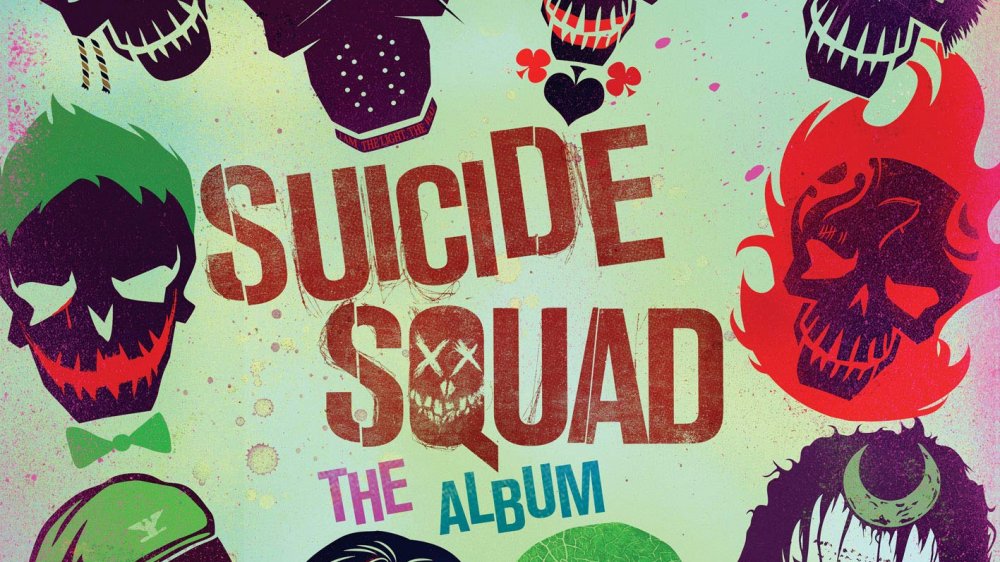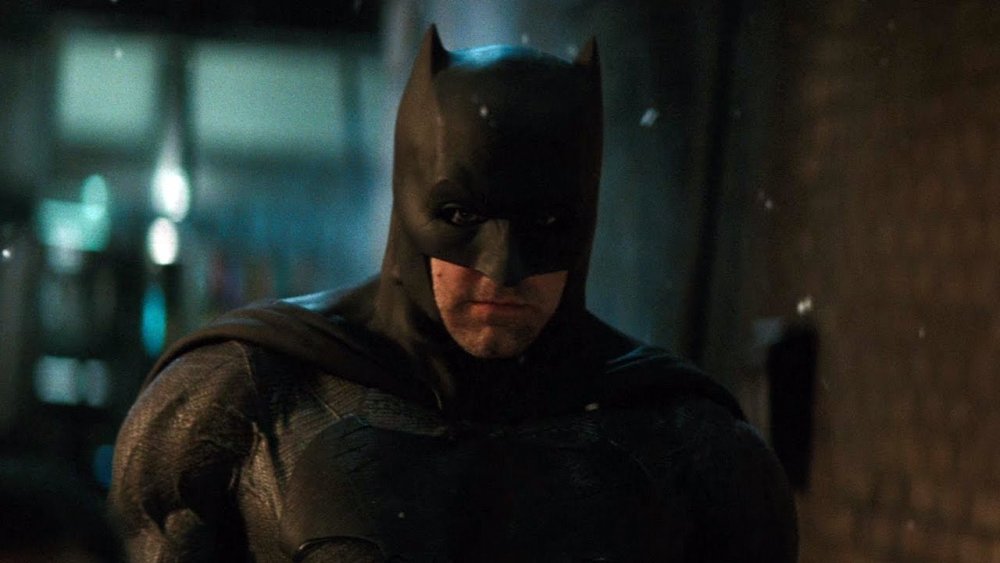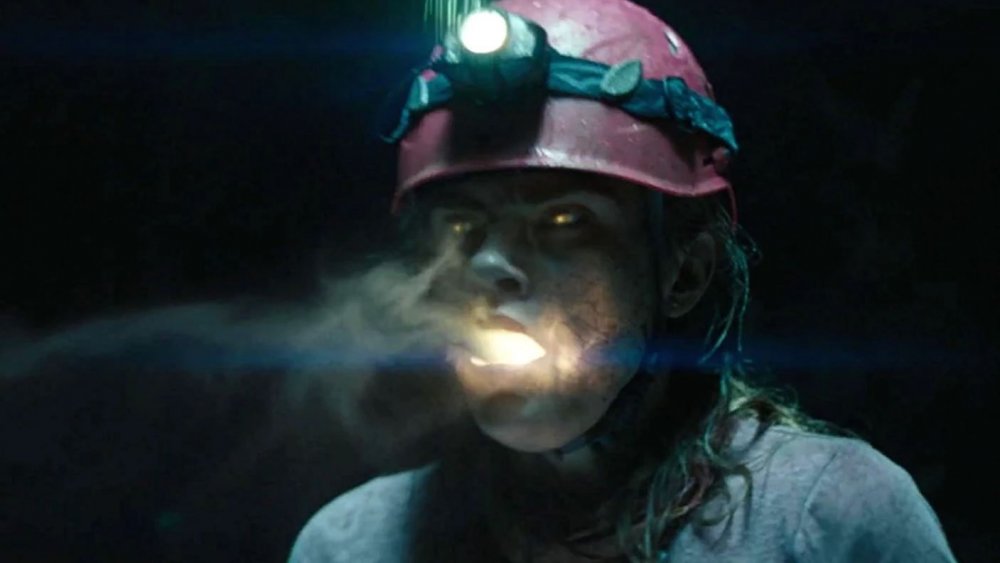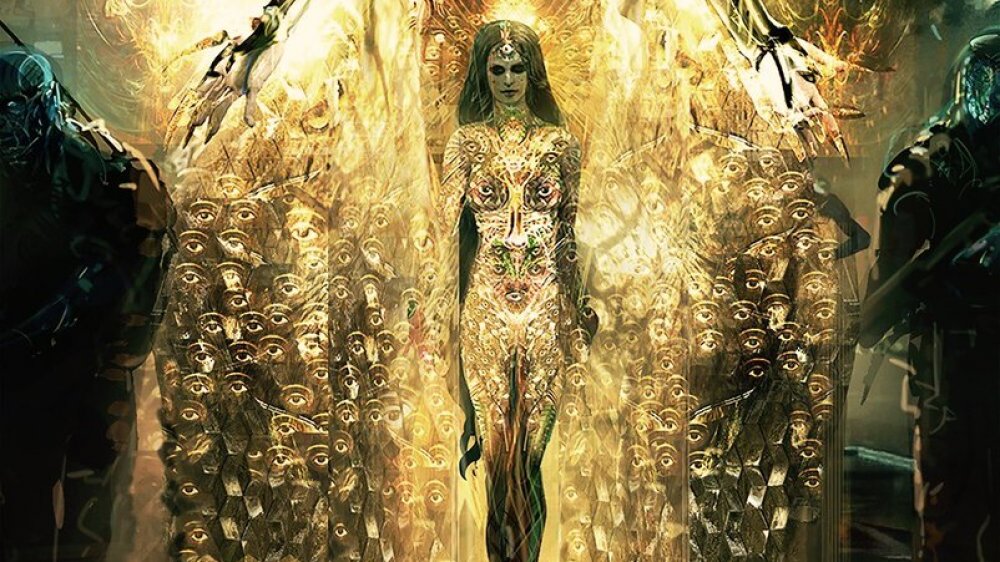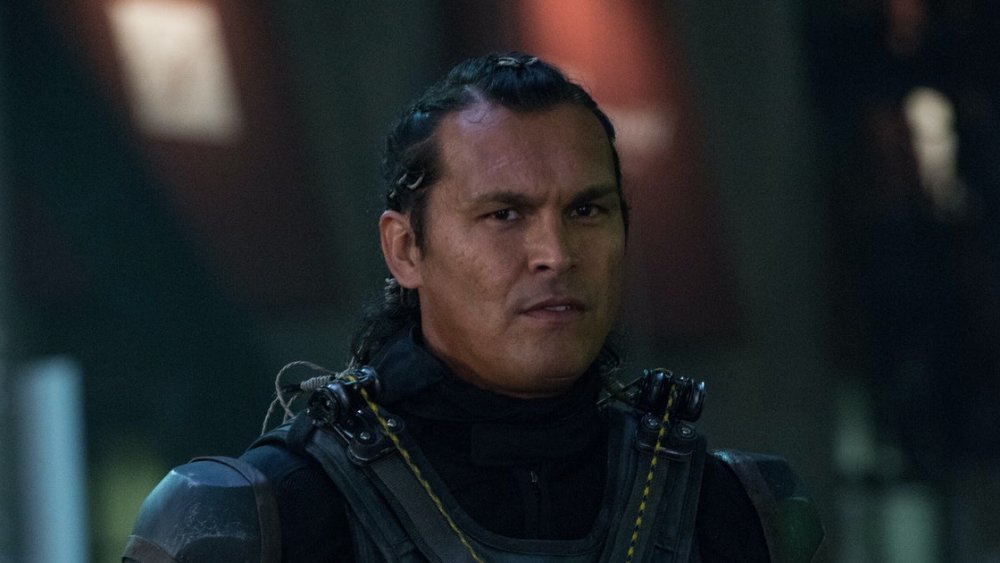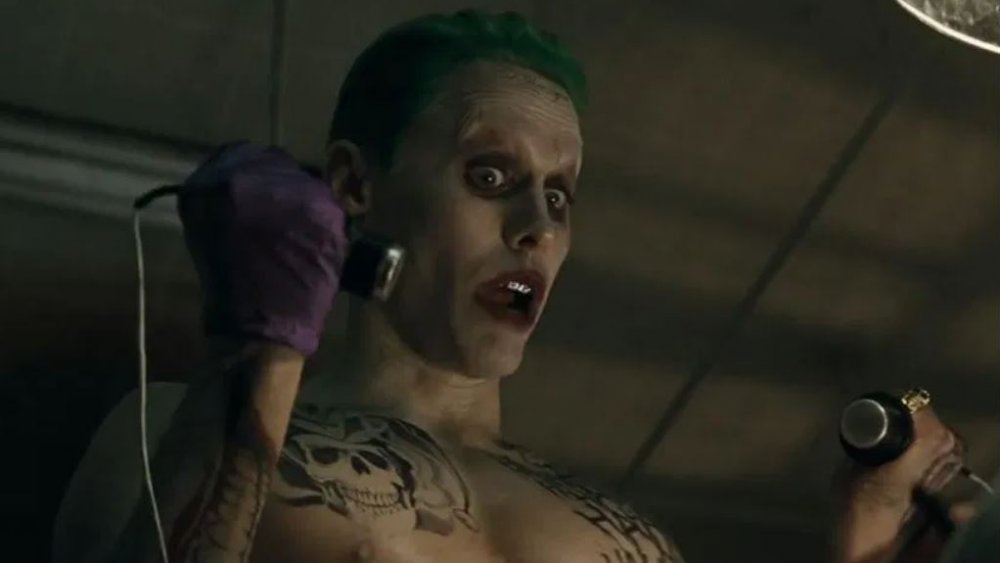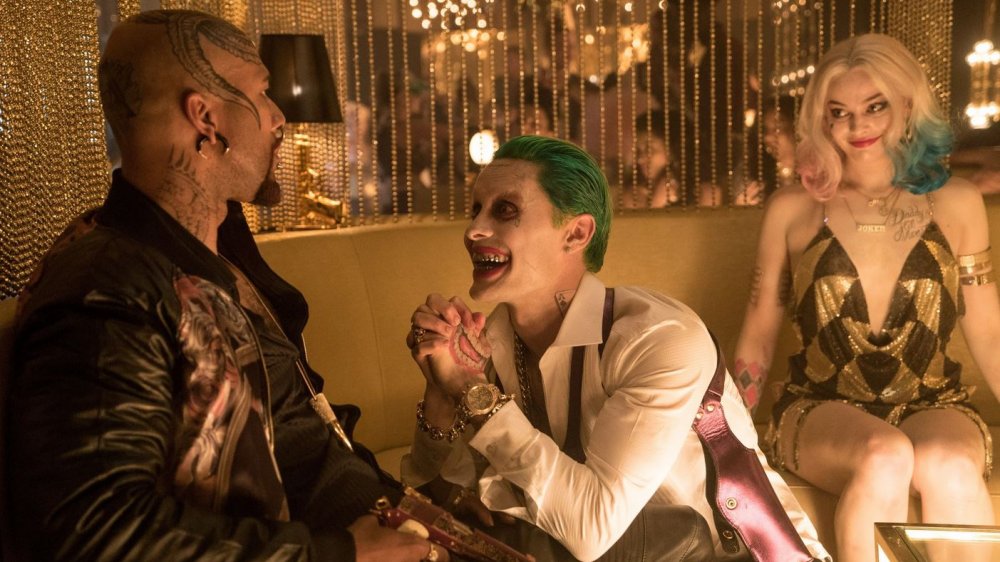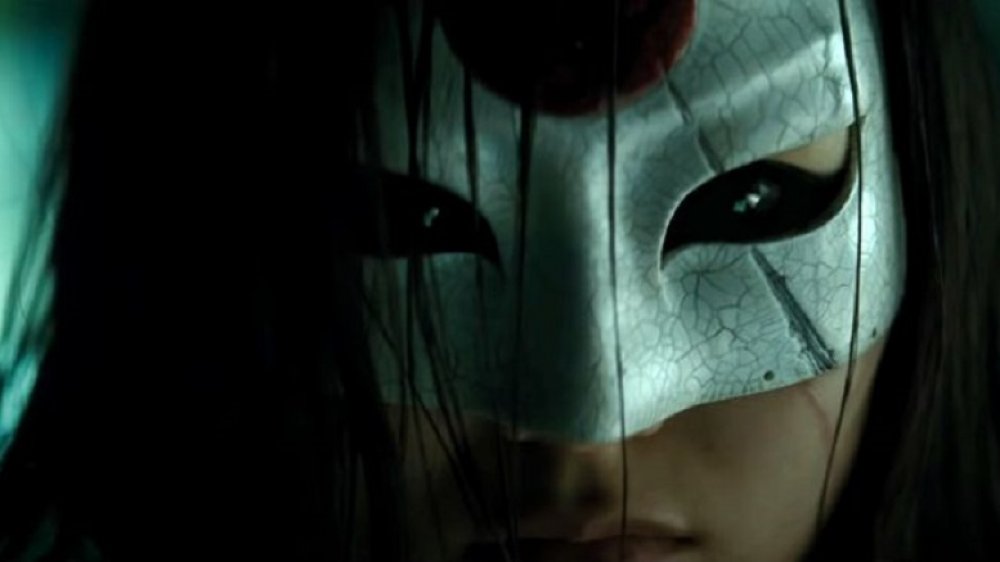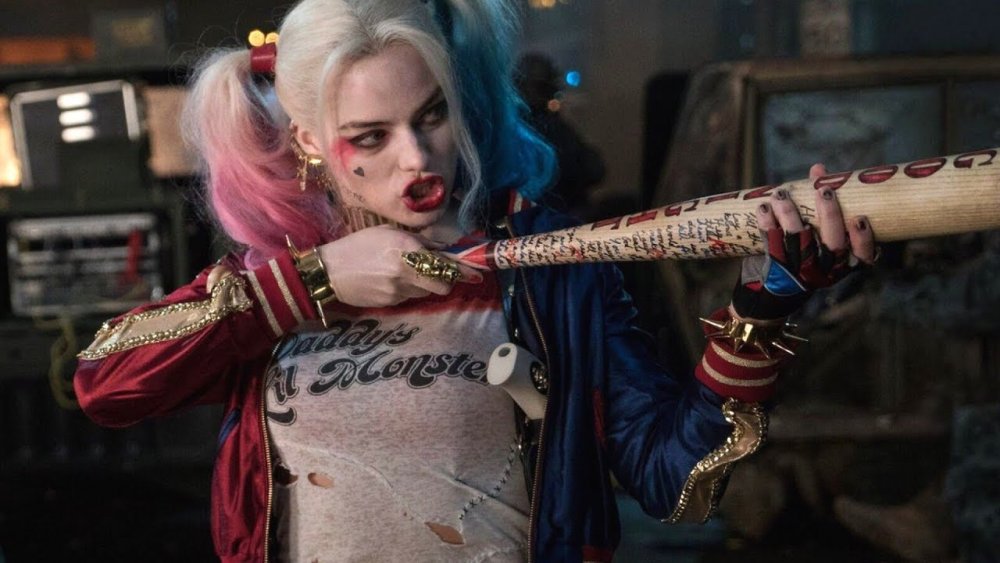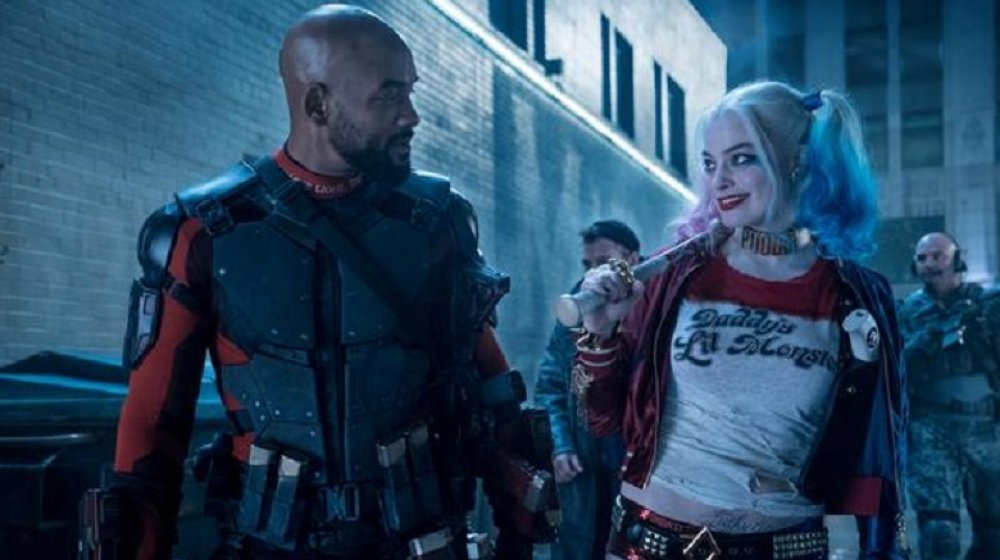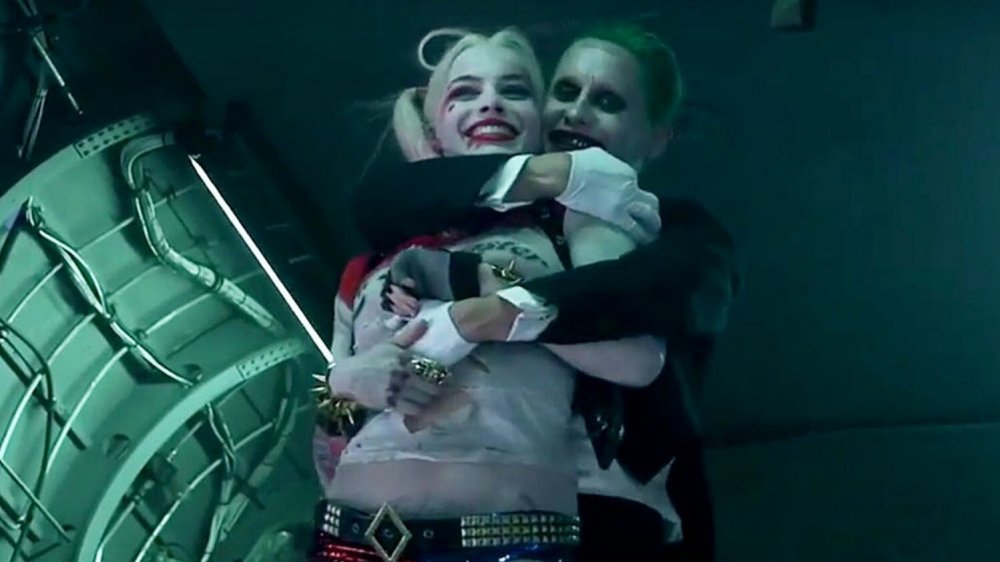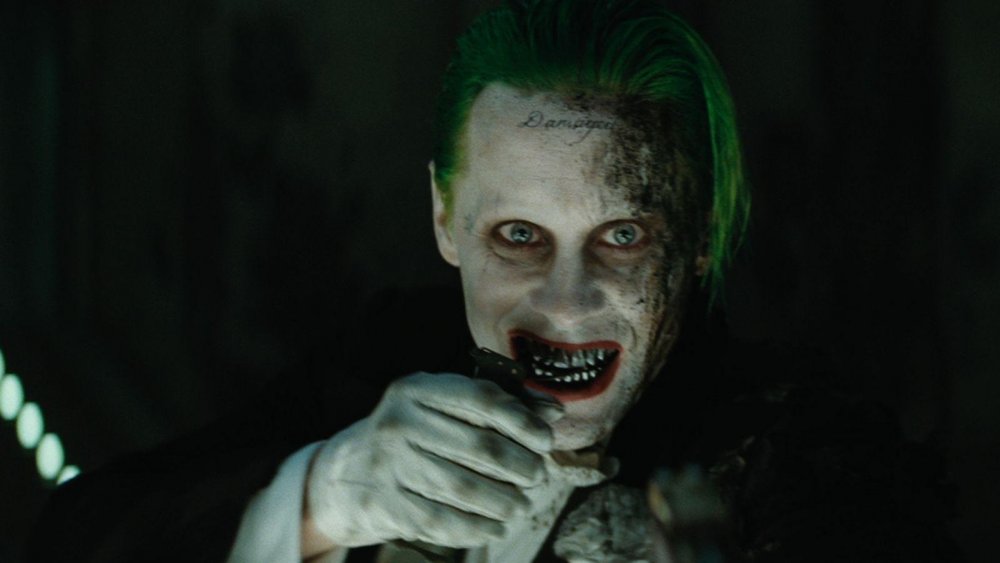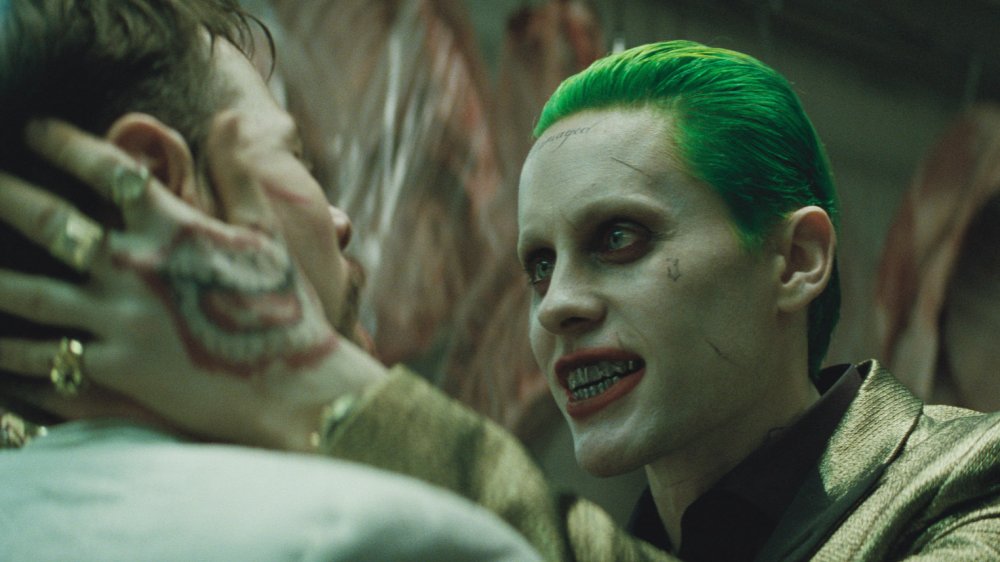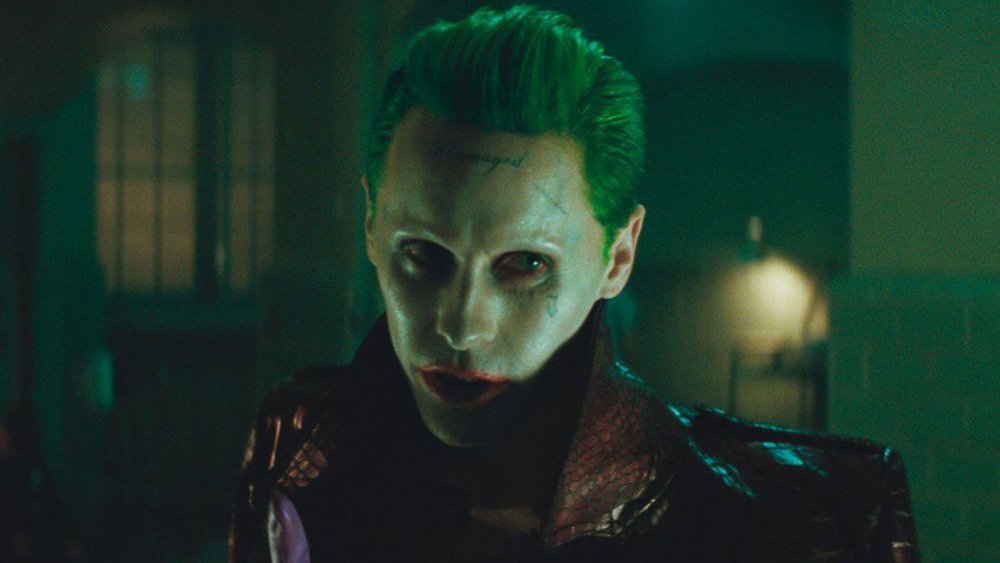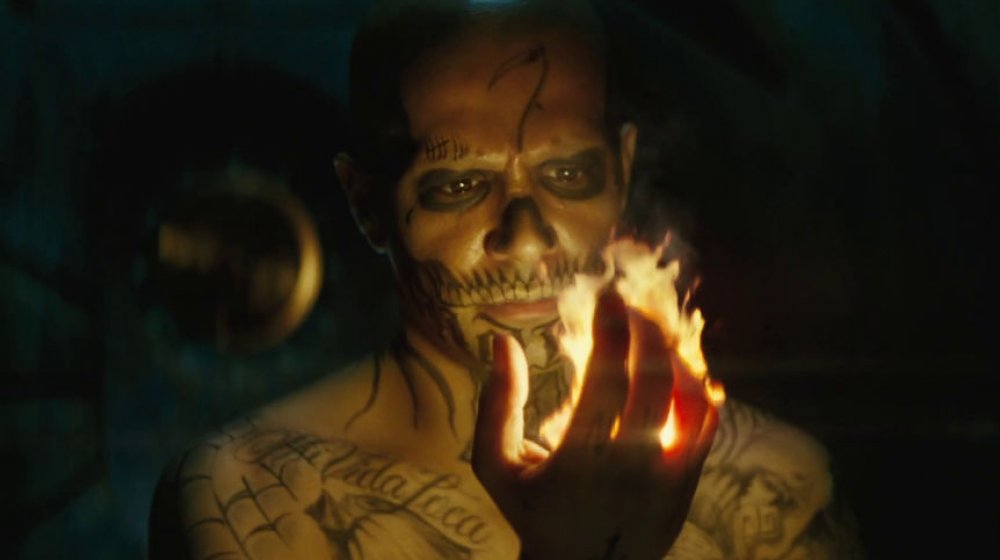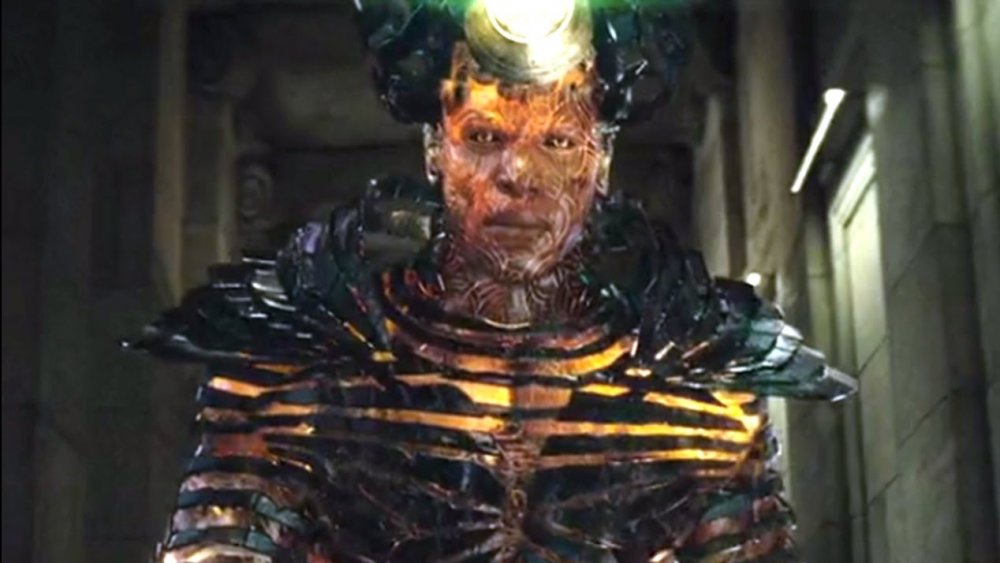How The Suicide Squad Director's Cut Is Different From The Original
The announcement of an official release date for the Justice League Snyder Cut has spurred online clamoring for the "Ayer Cut" of 2016's Suicide Squad. Ayer has been a primary proponent behind the demand, thanks in part to his candid conversations on social media. The film was met with much criticism, but no one has been more vocal about their displeasure than Ayer himself. Thanks to the many-headed hydra that is movie production, he's suggested that his original vision was thwarted. Through online posts, the director has shared how this flawed process compromised the movie, commenting on deleted scenes, alternate character looks, and even leaked script pages.
The stark differences between Ayer's initial vision and how it actually turned out are shocking, furthering a sense of loss within the DC community. And yet redemption may hang on the horizon. Per Ayer, his version of the film already exists — it's just waiting to be final edited. Although Warner Bros. hasn't yet confirmed a release, they haven't shot the idea down either. With hope hanging tenuously in the air, fans have been filling the time until they get more answers by piecing together the differences between the two versions. You don't have to spend any time doing research, however, because Looper has scoured the internet for all the main differences between the theatrical and Ayer cuts of Suicide Squad.
A more somber, introspective tone
The introductory Comic-Con 2015 Suicide Squad trailer hinted at a hauntingly gritty movie, set to an eerie rendition of "I Started a Joke." It left the viewer taut with ominous anticipation — along with a sinking feeling that survival rates would be low. In essence, Ayer successfully captured the ethos of Suicide Squad comic books.
These aren't inspiring tales of superheroes overcoming great odds — they're centered around repeated themes of violence, incarceration, torture and death. Hence, the name "Suicide Squad." Ayer claims his film's midnight palette was inspired by Christopher Nolan's Dark Knight trilogy, and his version is more akin to Todd Phillips' Joker.
By the time it hit theaters, however, audiences were left with a notably lighter movie — both literally and figuratively. According to Ayer, drastic changes were made to his "soulful drama" by "shell shocked" Warner Bros. executives concerned about scathing reviews from Batman v Superman: Dawn of Justice — as well as the wild success of Deadpool. In an effort to capture some of that box-office magic, Suicide Squad was transformed into a more comedic film. This might work for the snarky world of Deadpool, but as a representation of Suicide Squad's inherently sober fatalism, it failed miserably.
The film is set to a more mature soundtrack
Another element further compounding the disparate tone of Suicide Squad's theatrical cut is its gratuitous use of trendy pop music. Much like lighting and camera lens selection, a film's soundtrack plays a pertinent role in the viewer's experience and interpretation of the story being told.
Performers including Skrillex, Lil Wayne, G-Eazy, and Kehlani don't induce feelings of suspense or introspection. If anything, this kind of music robs Suicide Squad of depth, and makes it feel juvenile and disingenuous.
When Ayer was asked how his soundtrack compares to the original, he replied his cut features "much less." This is hinted at in the extended cut, which features more blues and rock by artists such as Etta James, Black Sabbath, and the White Stripes.
Batman shows up in a few more scenes
According to an interview conducted with Richard Cetrone, Ben Affleck's stunt double, he shot a few additional action scenes that never made it to theaters. "There were some things. I did a little more with the car, like trying to get into the car, trying to get through the roof. So I did a little more. There would probably be a little more of Batman in there."
In the video created by interviewer Lady Falcon, behind-the-scenes shots of the Harley flashback play in the background. In one short sequence, Cetrone as Batman can be seen attempting to cut into the roof of the car with something like an oxy-fuel torch.
This may be one of the deleted scenes he's referencing. Apparently, Batman's role was always intended to be limited, and the additional material featuring Batfleck doesn't have as large an impact as other changes in the director's cut. However, even if it's not a large amount, more Bats is always a good thing.
The story unfolds with June Moone and Enchantress
Another element that felt rushed was the introduction of June Moone and Enchantress in the original version. Rather than highlighting the importance of Enchantress' vast powers, or going into more detail about how archeologist June Moone found, and was subsequently possessed by, the ancient sorceress — this pertinent part of the story gets glossed over like a side note.
Ayer has noted he wanted Suicide Squad to open with June Moone and Enchantress — rather than jumping right to meeting the ill-fated crew locked up within Belle Reve's humid bowels. He also went on to say the two characters are more solidly arced out in his cut.
Rumors abound that these deleted scenes include better insight into the nature of June Moone and Rick Flag's romantic relationship. If so, this would add additional weight to the film's climax, which pivots so heavily upon Rick's feelings for June.
Enchantress has a more ethereal look
A major part of character development stems from their visual representation, which is often experimented with before a final look is established. The characters in Suicide Squad are no exception, as seen in various pieces of concept art.
Many of the final costuming choices stirred controversy among fans for being either too sexualized or not true enough to canonic material. Like all other aspects of production, the last call on character looks was out of Ayer's hands. However, Enchantress' final look took the most drastic turn from his initial vision.
When queried about her look, Ayer shared a gorgeous piece of concept art illustrating what he initially wanted for the character. Unlike the grungy, temptress-in-chains presented in the original cut, Ayer's Enchantress mesmerizes with an ethereal beauty encased in an airy confection of light and color. This would have been a far lovelier, more tasteful way to portray the potent magic flowing through Enchantress.
Slipknot has a more comprehensive backstory
There's a long-running trope in Suicide Squad comic books that says on every mission, one new recruit doesn't believe they actually have a live bomb implant — and has to learn the hard way as a result. Since these characters never last longer than a few minutes, they are usually low-grade villains no one in the audience will be sad to see go.
As a result, readers of the comics weren't that surprised at Slipknot's lack of screen time in theaters. However, like other aspects of the film reduced during the final editing process, his part in the story feels incomplete.
According to Adam Beach, the actor who portrayed the rope-obsessed villain, he filmed an opening sequence depicting how he gets enlisted into Task Force X. Ayer chimed in on the conversation, noting, "Crime doesn't pay." As to exactly what Slipknot was doing when he got caught, fans will just have to wait and see.
More depth into the nature of Harley and Joker's abusive relationship
The extended cut of Suicide Squad is 13 minutes longer than the theatrical version, and that extra time helps salvage it a bit. Most of that time comprises additional footage from Harley Quinn's flashbacks throughout the film, including an extended view of Joker's escape from Arkham.
While his cronies wreak havoc on the medical center, Joker can be seen killing someone offscreen with a baseball bat, all while Dr. Quinzel is being wrestled onto an examination table. Then the two would-be abusive lovers have a discussion over the merits of Quinzel's therapy methods, before cutting back to the original version where Joker hurts her "really, really bad."
Another extended cut scene details what happened later that night, leading up to Quinzel's transformation into Harley Quinn, à la Ace Chemicals. The extended cut still falls short of filling all plot holes, however. Thankfully, the Ayer cut includes additional insight into the harsh realities of this "mad love," and more Joker in general.
A more sinister death awaits Common's character, Monster T
One trait that makes Joker so terrifyingly dangerous is his chaotic unpredictability. This is something Monster T, as played by Common during Harley's club flashback scene, had to learn the hard way when he offended J during a perceived inappropriate encounter with Harley — or for not being inappropriate enough with her, it's impossible to tell with a wild card like Joker.
Regardless of motives, or lack thereof, Monster T meets an untimely end at the hands of Joker in the original version. Per Ayer, even more insight into Joker's twisted mind can be found in his interpretation of this scene — instead of shooting him, Joker intimidates Monster T into taking his own life.
This shocking turn of events fits Joker's personality in comic books better than a "simple" murder. He would relish breaking down such an apparently confident person, until all that's left is a shattered shell of despair and self-loathing, aching for escape from existence.
Katana wields a larger role
Three official trailers were released before Suicide Squad hit theaters, all containing scenes that never made it to the final cut. This has fueled the sense among fans that extensive material was lost in production, and increased demand for the Ayer Cut. According to Ayer, one deleted story arc had to do with Katana.
Ayer has stated Karen Fukuhara's sword-wielding character played a bigger role in his cut. This makes sense, considering how little of Katana made it into the final film. Apparently, she poses quite a threat to the Squad at the hands of a shared enemy — "Enchantress takes [Katana] over with a tendril and she attacks the rest of the Squad."
This scene can be glimpsed 1:37 into "Official Trailer 1," when her eyes become completely black, as though possessed. It can be seen again 1:47 into the "Blitz Trailer" (named for its use of the song "Ballroom Blitz") — after which the camera cuts to a top-down shot of Katana being whirled around like a top by a familiar-looking green tendril.
Harley Quinn is more empowered and complex
For all its perceived shortcomings, the original cut of Suicide Squad did get one thing right — Margot Robbie cast as the one, the only, Harley Quinn. For the first time since the character was created by Paul Dini and Bruce Timm more than 25 years ago, Harley was finally seen on the big screen. Since that time, Margot's presentation of Harley has become as iconic and quintessential as Hugh Jackman's Wolverine.
Unfortunately, the final presentation of Suicide Squad fell short of properly representing this complex, brilliant character — and fans were left wanting more. Instead, "her storyline was 'eviscerated'," according to Ayer — along with an accurate depiction of her incredibly abusive relationship with Joker.
Instead of the tragic, violent co-dependence the two have shared since day one (see "Mad Love,"), their twisted relationship was reduced to a classic "love story" — which is incredibly disturbing to those familiar with their history. Ayer has suggested his version of the movie puts more emphasis on Harley Quinn and her journey towards independence.
There is a subplot romance between Deadshot and Harley
Part of Harley's independent streak in the Ayer cut manifests itself as a sideline fling between Harley and Deadshot, which apparently ignites between the two on a flight of stairs. This is a fun nod to source materials like Assault on Arkham and the 2011 New 52 "Suicide Squad" comic books — wherein Floyd and Harley do indeed hook up for a time.
This may seem confusing for those who have only seen Harley with Joker, but over the years Harley has had flings with various characters when she's between breakups with her main squeeze. In addition, Harley has discovered that she is bisexual and polyamorous, as seen on the Harley Quinn show and pages of New 52 and Rebirth.
A subplot romance between Harley and Deadshot is not only canonically accurate, it would explain the chemistry the two shared onscreen. It would also help explain why Harley asks Floyd if she has "a hickey or something" right before the helicopter scene.
Joker pushes Harley out of the helicopter
One of the more exciting Suicide Squad scenes takes place when Harley makes her daring escape from a rooftop onto Joker's helicopter. Her moment of glory is short-lived, however, because she tumbles to out onto the rooftop below mere moments later.
How she comes to fall, however, differs between the original version and Ayer's cut. In theaters, an airborne projectile strikes the helicopter, violently knocking Harley backwards. It's edited to further perpetuate the myth that Joker really loves Harley, as he's shown yelling in despair while he tries in vain to keep her from falling out.
Unfortunately, nothing could be further from the truth. Ayer has said that in his version, Joker "pushed her, but not to kill her" in a fit of jealous rage over her new "friends." This sounds more like the Joker fans are familiar with, considering his prior abuses include throwing Harley through a glass window from several stories up.
Following the helicopter crash, Joker is seen in pursuit with a burnt face
In the original version, the helicopter crash signals a mysterious, albeit anticlimactic, end to Joker's Suicide Squad story. However, in Ayer's version, Joker's scenes continue on into the final battle, as does his thread of jealous rage.
This is evident in the Ayer Cut, in which Joker follows the Squad after the crash. His half-burned visage is a subtle reference to the damage he inflicted upon Harvey Dent in the explosion that transformed him into Two-Face. A few seconds of this scene can be glimpsed 1:55 into the "Blitz Trailer" — where a half-burned Joker can be seen pulling a grenade pin out with his teeth before throwing it and yelling "Bye-bye!"
Joker makes a deal with Enchantress
Further continuing his arc in the Ayer cut, Joker enlists the aid of Enchantress. "He made a deal with Enchantress where he'd take Harley and be the king of Gotham and was present in the third act," Ayer told fans. "Since SS was mainly a Harley (And Deadshot) film, the temptation would have been greater."
This additional material gives much needed clarity to Joker's motives for being involved in such a pursuit in the first place. He doesn't care about anyone enough to rescue them, not even Harley, unless there's something in it for him.
It also helps explain another scene first glimpsed in trailers later cut for the theatrical release. 1:30 into the "Blitz trailer," Joker's unnerving laugh is heard echoing throughout the chamber where the Squad is fighting Enchantress/Incubus during the final boss fight. Upon hearing this, Harley says "Uh-oh," and Deadshot says, "Not good!"
There's a faceoff between Joker and the Squad
Most of the information about Ayer's vision for Suicide Squad comes directly from insights he's shared in social media posts. One exception to this concerns a deleted juicy plot twist detailed on leaked a script page.
It contains a confrontation between the Squad and the temporary team-up between Enchantress and Joker, who have taken Amanda Waller hostage. The leaked script page provides succinct, albeit noteworthy, insight into Joker's disregard for other living beings, and Harley's conflicted loyalties.
When asked on Twitter if the scene was ever shot, Ayer replied, "Shot and edited. Of course you were not permitted to see it my friend." Well, that's a shame.
Diablo survives until the end
Another notable difference between the Ayer and theatrical cuts concerns the fate of El Diablo. His haunting backstory was almost axed, along with other scenes considered too dark for a PG-13 "comedy," however, the director managed to convince executives of its importance to the overall story.
"It was the only battle I won," he wrote on Twitter. "Decision makers were allergic to Diablo killing his family. Look at my films — death, guilt, redemption and emancipation from toxic relationships are themes I explore as a filmmaker. The human soul is beautiful and complex." Thank goodness he won at least that battle, because removing it would have certainly taken away from the sense of redemption granted in Diablo's final battle against Incubus.
In the Ayer cut, though, Diablo doesn't die while fighting for the common good — instead, he survives the entire length of the film. This leaves one wondering how they managed to vanquish Incubus without Diablo's self-sacrifice.
The final boss fight is against a giant Parademon
As it turns out, Ayer never intended for the Squad to battle Incubus during the grand finale. Per a Twitter post concerning the matter, "There was supposed to be a Parademon boss fight — that got killed in prep so it was a boss fight with Incubus."
Parademons are ruthless monsters serving in the army of legendary DC Comics villain Darkseid. Given the way Darkseid's looming presence was foreshadowed in a number of other DCEU films, This additional plot element would have tied multiple franchises together into a cohesive storyline.
Unfortunately, continuity is something DC struggles with, especially when compared to the comprehensive multi-year plan executed by Marvel Studios. For DC fans, it's difficult not to be envious of their success. Until more is unveiled concerning a possible release date for the Ayer Cut, fans will have to wait for this possible redemption with bated breath.
